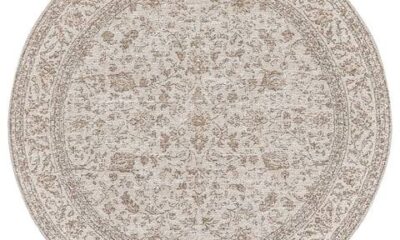Health
Navigating Mental Health During Pregnancy and Postpartum

Pregnancy and the postpartum period are significant times in a woman’s life, filled with a blend of excitement, anticipation, and, often, considerable stress. Amidst the joy of bringing a new life into the world, many women face mental health challenges that can profoundly impact their well-being. Understanding and addressing mental health issues during these critical stages are essential for both the mother’s and the baby’s health.
Understanding Mental Health During Pregnancy
Mental health during pregnancy can be influenced by a myriad of factors. Hormonal changes, physical discomfort, and the pressure of impending parenthood can all contribute to emotional and psychological strain. Common mental health issues that pregnant women may experience include:
- Anxiety: Concerns about the baby’s health, childbirth, and the changes a new baby will bring can cause significant anxiety.
- Depression: Prenatal depression is more common than many realize, affecting about 7-20% of pregnant women. Symptoms can include persistent sadness, loss of interest in activities, and changes in sleep or appetite.
- Obsessive-Compulsive Disorder (OCD): Some women develop OCD during pregnancy, characterized by intrusive thoughts and compulsive behaviors related to the baby’s safety.
The Impact of Postpartum Mental Health
The postpartum period, often referred to as the “fourth trimester,” is equally crucial for mental health. During this time, women adjust to their new roles as mothers while recovering from childbirth. Key mental health concerns in the postpartum period include:
- Postpartum Depression (PPD): Affecting approximately 10-15% of new mothers, PPD can cause intense feelings of sadness, anxiety, and exhaustion that interfere with a woman’s ability to care for herself and her baby.
- Postpartum Anxiety: This condition involves excessive worry and fear, often about the baby’s health and safety, and can be just as debilitating as PPD.
- Postpartum Psychosis: A rare but severe condition, postpartum psychosis involves hallucinations, delusions, and extreme mood swings and requires immediate medical attention.
Recognizing the Signs and Symptoms
Recognizing the signs of mental health issues during pregnancy and postpartum is critical for timely intervention and support. Symptoms to watch for include:
- Persistent feelings of sadness or hopelessness
- Excessive worry or fear
- Loss of interest in activities once enjoyed
- Changes in sleep patterns, such as insomnia or excessive sleeping
- Changes in appetite or weight
- Difficulty bonding with the baby
- Thoughts of self-harm or harming the baby
Seeking Help and Support
Addressing mental health during pregnancy and postpartum requires a multifaceted approach. Here are some strategies to consider:
- Professional Help: Seeking help from mental health professionals, such as therapists, psychiatrists, or counselors, can provide valuable support. Cognitive-behavioral therapy (CBT) and interpersonal therapy (IPT) are effective treatments for perinatal mental health issues.
- Medication: In some cases, medication may be necessary to manage symptoms. It is essential to consult healthcare providers to ensure that any prescribed medication is safe for use during pregnancy and breastfeeding.
- Support Groups: Joining support groups for pregnant and postpartum women can provide a sense of community and shared understanding. These groups offer a space to share experiences and receive encouragement from others facing similar challenges.
- Self-Care: Prioritizing self-care is vital. This includes getting adequate rest, eating a balanced diet, engaging in regular physical activity, and setting aside time for relaxation and activities that bring joy.
- Partner and Family Support: Having a strong support system at home can significantly impact a woman’s mental health. Partners and family members should be encouraged to participate in the care and support of the new mother.
Preventive Measures
Taking preventive measures can help mitigate the risk of developing mental health issues during pregnancy and postpartum. These include:
- Prenatal Education: Attending prenatal classes and educating oneself about pregnancy, childbirth, and postpartum care can reduce anxiety by preparing expectant mothers for what to expect.
- Routine Screening: Healthcare providers should routinely screen for mental health issues during prenatal visits and postpartum check-ups to identify and address any concerns early.
- Healthy Lifestyle Choices: Maintaining a healthy lifestyle through proper nutrition, regular exercise, and sufficient sleep can support overall mental well-being.
- Open Communication: Encouraging open communication about feelings and experiences with healthcare providers, partners, and support networks can help identify and address issues promptly.
Navigating mental health during pregnancy and postpartum is a complex but essential aspect of maternal care.
Health
Your Prostate Deserves a Standing Ovation: Could Prostavive Colibrim Be the Natural Support You’ve Been Waiting For?

Ever find yourself mapping every bathroom between the couch and bed? You’re not alone. Let’s be honest, guys. As the years add up, so do those little… inconveniences. That extra trip (or three) to the loo each night. The sudden, urgent “gotta go now” feeling. The stream that just doesn’t have the same oomph it used to. If this sounds familiar, you’re sharing a journey with millions of men. The good news? You don’t have to just grin and bear it. Nature might have some powerful allies, and Prostavive Colibrim is stepping into the spotlight as a dedicated blend designed specifically to support your prostate health as you age. Let’s explore what this supplement is all about, minus the hype.
What Exactly is Prostavive Colibrim?
Think of Prostavive Colibrim as your prostate’s daily helping hand. It’s not a magic pill, but a carefully crafted natural dietary supplement. Its mission? To combine the wisdom of traditional herbal medicine with modern nutritional science to target the root causes of those frustrating urinary symptoms and support overall prostate wellness. It positions itself firmly as a complementary approach – something to use alongside a healthy lifestyle and any treatments your doctor recommends, not a replacement for medical care.
The Power Players Inside: Nature’s Prostate Support Team
So, what makes Prostavive Colibrim tick? Its strength lies in its blend of clinically studied ingredients, working together like a well-rehearsed orchestra. Here’s a peek at the star performers and what they bring to the stage:
- Saw Palmetto (Serenoa repens): The veteran of prostate supplements. Renowned for its ability to help manage urinary symptoms by supporting healthy hormone balance (specifically DHT levels) and reducing inflammation in the prostate gland. Think of it as calming the irritation.
- Beta-Sitosterol: A plant sterol that’s a rockstar for improving urinary flow and reducing that “incomplete emptying” feeling. It helps relax the muscles involved in urination and supports overall bladder comfort. Imagine it helping things flow more smoothly.
- Pygeum Africanum: Sourced from the bark of an African evergreen tree, Pygeum is particularly valued for its anti-inflammatory properties. It’s often linked to reducing nighttime frequency (nocturia) and improving overall comfort. It’s like applying a soothing balm internally.
- Supporting Cast (Often Includes): You’ll frequently find other beneficial nutrients like Zinc (crucial for prostate function and immune health), Selenium (a powerful antioxidant), and sometimes Lycopene or Nettle Root extract, each adding their unique supportive notes to the symphony.
Imagine a simple chart: On the left, common prostate concerns (Frequent Urination, Weak Flow, Inflammation). On the right, arrows connecting each concern to the key ingredients in Prostavive Colibrim that specifically target it. It visually reinforces the “team effort” inside the capsule.
How Prostavive Colibrim Works: Patience is Key (But Worth It)
Here’s the real talk: Prostavive Colibrim isn’t an overnight fix. Your prostate didn’t change overnight, and supporting it back to better health takes consistent effort. Think of it like tending a garden – you plant the seeds (take the supplement), water regularly (be consistent), and patiently wait for the blooms (results).
- The Timeline: Most men start noticing subtle improvements – maybe slightly less urgency or a slightly stronger stream – after 4-6 weeks of daily, consistent use. Significant, noticeable benefits often take 2-3 months or sometimes longer. This isn’t a flaw; it’s how natural, body-nourishing supplements work. They support your system’s own healing processes.
- The Goal: Reduced nighttime trips. More controlled urgency. Improved flow and emptying. Less discomfort. Supporting healthy hormone balance for long-term prostate wellness. It’s about reclaiming comfort and confidence in your daily life.
- Realistic Expectations: Like Mike, 62, shared: “After about 6 weeks on Prostavive Colibrim, I realized I wasn’t setting my alarm for 2 AM anymore. The stream wasn’t firehose strength, but it was definitely better. It just feels… calmer down there now.”
Prostavive Colibrim vs. The Conventional Route: Partners, Not Rivals
It’s crucial to understand where Prostavive Colibrim fits in the bigger picture:
- Complementary, Not Alternative: This supplement shines brightest when used alongside conventional medical advice and healthy habits (think diet, exercise, stress management). It’s not meant to replace prescribed medications like alpha-blockers or 5-alpha-reductase inhibitors. Think of it as adding natural reinforcements to your overall strategy.
- Addressing the Root? While conventional meds often manage symptoms effectively, many men seek natural options like Prostavive Colibrim hoping to support the underlying health of the prostate tissue and reduce inflammation at the source, alongside symptom relief.
- The Safety Profile: Generally, well-formulated natural prostate supplements have a favorable safety profile with fewer side effects than some prescription options (though always discuss with your doctor, especially if you have other health conditions or take medications!). This makes them appealing for long-term support.
Busting the Myths: Separating Prostate Fact from Fiction
Let’s clear the air on some common prostate supplement misconceptions:
- Myth 1: “Natural means instant results.” Nope. As we covered, Prostavive Colibrim requires consistent use over weeks or months. Patience is non-negotiable.
- Myth 2: “I can stop my doctor-prescribed meds if I take this.” Absolutely not! Never stop or alter prescribed medication without consulting your doctor. Supplements are support, not substitutes.
- Myth 3: “All prostate supplements are basically the same.” False. Quality, ingredient sourcing, dosages, and the specific blend matter hugely. Prostavive Colibrim stakes its claim on specific, researched ingredients in targeted amounts. Look for transparent labels.
Your Prostavive Colibrim Action Plan: 3 Steps to Start
Ready to see if Prostavive Colibrim could be part of your prostate health solution?
- Talk to Your Doc: This is step zero. Discuss your symptoms, get a proper check-up (PSA test, DRE), and talk about adding a natural supplement like Prostavive Colibrim. Ensure it won’t interact with any medications you’re taking.
- Commit for 90 Days: Give it a fair shot. Mark your calendar. Take it consistently, every day, as directed on the label. Don’t judge it after a week or two.
- Tune Into Your Body: Keep a simple log. Note changes in frequency (especially nighttime), urgency, flow strength, and overall comfort. How do you feel? This helps you and your doctor assess its impact.
The Bottom Line: Navigating prostate changes is a common part of aging, but silent suffering isn’t mandatory. Prostavive Colibrim offers a promising, natural pathway to support your comfort, urinary function, and long-term prostate wellness. It’s about taking proactive, gentle steps to feel more like yourself again. Why not give your prostate the thoughtful support it deserves?
What’s one small step you’ll take today for your prostate health? Share your thoughts or questions below!
You May Also Read: The Ultimate Guide to iofbodies.com Applications: Your Body & World, Connected Smarter
FAQs
Is Prostavive Colibrim safe? Generally, yes, when taken as directed by healthy adults. However, always consult your doctor before starting any new supplement, especially if you have underlying health conditions (like liver/kidney issues), take blood thinners, other medications, or have scheduled surgery. Safety during pregnancy/breastfeeding is not established.
How long does it take for Prostavive Colibrim to work? Most users report noticing subtle improvements after 4-6 weeks of consistent daily use. Significant results often take 2-3 months or longer. Patience and consistency are key, as it works by gradually supporting prostate health.
Can I take Prostavive Colibrim with my prescription prostate medication? DO NOT stop or change prescribed medication without consulting your doctor. Discuss adding Prostavive Colibrim with them first. While often complementary, potential interactions need professional evaluation.
Are there any side effects? Prostavive Colibrim is generally well-tolerated. Mild, potential side effects reported with ingredients like Saw Palmetto can include mild stomach upset or headache. Discontinue use and consult your doctor if you experience any adverse reactions.
Where can I buy authentic Prostavive Colibrim? The most reliable source is typically the official Prostavive Colibrim website to ensure you get the genuine formula and any available guarantees. Be cautious of third-party sellers on large marketplaces due to risks of counterfeits.
Do I need to take Prostavive Colibrim forever? Prostate health is an ongoing concern for aging men. Many users find it beneficial for long-term support. You can discuss periodic reviews with your doctor to assess continued need and effectiveness.
When should I see a doctor about prostate symptoms? Always see a doctor first for any new or worsening urinary symptoms (frequent urination, weak flow, pain, blood in urine) to rule out serious conditions like infection or prostate cancer. Use supplements like Prostavive Colibrim only after getting a diagnosis and clearance from your physician.
Health
The Ultimate Guide to iofbodies.com Applications: Your Body & World, Connected Smarter

Imagine this: You’re an industrial worker on a sweltering factory floor. Your smartwatch buzzes – not a text, but an alert: *”Core temp rising + dehydration risk detected. Nearby hydration station: Sector 3B.”* Meanwhile, a diabetic patient miles away gets a notification: “Blood glucose trending low. Suggested snack: 15g carbs within 10 mins.” An elite runner reviews her morning session: “Optimal oxygen uptake achieved! Next workout: Focus on stride efficiency.” This isn’t sci-fi – it’s the real-time power of iofbodies.com applications in action.
Ever feel like managing your health, fitness, or safety is reactive, fragmented, or just plain guesswork? What if your technology could anticipate your needs based on what’s happening inside your body and around you? That’s the revolutionary promise of the Internet of Bodies (IoB), and iofbodies.com applications are at the forefront, making it a practical, powerful reality. Let’s dive into how this platform is changing the game.
What Exactly Are iofbodies.com Applications? (Beyond the Buzzword)
Think of iofbodies.com applications as your ultimate personal command center for health and environmental intelligence. It’s not just one app; it’s a sophisticated, integrated platform built on the Internet of Bodies concept. So, what’s IoB?
- The Basics: The Internet of Bodies (IoB) is the next evolution beyond the Internet of Things (IoT). While IoT connects everyday objects (like your fridge or thermostat) to the internet, IoB connects human bodies via advanced sensors – wearables, implants, even digestibles – alongside sensors monitoring our surroundings (air, water, surfaces).
- The iofbodies.com Difference: This platform takes raw data from these diverse biosensors and environmental monitors and transforms it into actionable intelligence. It’s the central hub where:
- Your heart rate from a smart patch,
- Blood glucose from a continuous monitor,
- Your movement patterns from motion sensors,
- The air quality in your workspace,
- The water purity near a construction site…
…all come together. Layered on top is serious AI brainpower to spot patterns, predict risks, and deliver personalized insights, all wrapped in iron-clad security.
How iofbodies.com Applications Work: The Tech Made Simple
Don’t worry, we won’t get lost in techno-babble! Here’s the straightforward breakdown of the magic:
- Sense: Tiny, advanced biosensors (on your skin, in clothing, embedded in equipment) constantly gather data from your body (vitals, movement, biochemical levels). Environmental sensors simultaneously capture data around you (air particles, toxins, temperature, humidity, noise).
- Connect: This data streams securely via IoT protocols (like Bluetooth, Wi-Fi, or cellular networks) to the cloud-based iofbodies.com applications platform. Think of it like sending encrypted postcards from your body and environment to a super-secure data center.
- Analyze: This is where the AI superpowers kick in. Sophisticated algorithms crunch the massive influx of data in real-time. They look for patterns, anomalies, correlations between your body’s signals and your environment. Is your heart rate spiking because the air quality dipped? Is fatigue setting in before a predicted blood sugar drop?
- Insight & Action: The platform translates complex analysis into clear, personalized insights delivered right to your device (phone, tablet, smartwatch) or a supervisor’s dashboard. This could be:
- A health recommendation (“Take your medication now”).
- A fitness optimization (“Adjust your pace for max calorie burn”).
- A critical safety alert (“Evacuate: Toxic gas detected”).
- A proactive risk assessment (“High fall risk detected for Worker #7 on Scaffold A”).
- Secure: Crucially, every step is protected. Military-grade encryption scrambles the data during transmission and storage. Multi-factor authentication (like a password + fingerprint) ensures only authorized users access sensitive information. Your body data isn’t just valuable; it’s fiercely guarded.
Why This Beats Your Current Tracker (The Core Functions)
Forget basic step counts. iofbodies.com applications deliver profound value through these core functions:
- Real-Time Biometric & Environmental Fusion: It doesn’t just track your pulse or the air quality; it understands how they interact. This holistic view is revolutionary.
- AI-Powered Predictive Analytics: Moving beyond reporting what happened to predicting what might happen. Like a weather forecast for your personal health and safety.
- Hyper-Personalized Insights: Generic advice is out. Your recommendations are tailored to your unique physiology, activity level, and real-time context. It learns you.
- Proactive Risk Mitigation: Shifting from reacting to incidents (a fall, a hypoglycemic episode) to preventing them by identifying subtle warning signs early.
- Centralized, Secure Command Hub: Provides a unified view for individuals managing their own health/fitness, or for organizations (hospitals, gyms, factories) overseeing the well-being of many.
Putting it to Work: Real-World iofbodies.com Applications
This isn’t theoretical. Here’s exactly how different groups benefit:
- Revolutionizing Healthcare:
- Chronic Disease Management: Continuous glucose monitoring (CGM) integrated with activity and nutrition data helps diabetics manage levels proactively. Heart failure patients get alerts on fluid buildup before symptoms worsen. (Think beyond standalone Dexcom devices to a unified ecosystem).
- Remote Patient Monitoring (RPM): Doctors at Johns Hopkins or Mayo Clinic could monitor post-op patients’ vital signs, wound healing indicators (via smart bandages), and home environment in real-time, enabling earlier interventions and fewer readmissions.
- Personalized Treatment Plans: AI analyzes individual responses to medication or therapy, allowing clinicians to fine-tune treatments for better outcomes. Imagine tailoring cancer therapy based on real-time biomarker feedback.
- Elderly Care & Fall Prevention: Motion sensors detect unusual gait patterns or prolonged inactivity in seniors living alone, triggering alerts to caregivers or family members before a fall occurs.
- Optimizing Fitness & Athletic Performance:
- Precision Training: Go beyond Garmin or Whoop. AI analyzes your heart rate variability (HRV), blood oxygen, muscle fatigue (via EMG sensors), and even local weather/pollution to create dynamically adjusted workout plans. Overtrain? It tells you. Ready to push? It knows.
- Recovery Optimization: Tracks sleep quality, stress markers (like cortisol trends), and muscle repair indicators to tell you exactly when you’re fully recovered and primed for peak performance.
- Injury Prevention: Identifies subtle imbalances or movement compensations during training (like uneven stride force) that could lead to injury, prompting corrective exercises.
- Talent Identification: Academies (like IMG or national sports bodies) could use aggregated data to identify athletes with unique physiological responses or resilience markers.
- Transforming Workplace Safety (Especially Industrial):
- Proactive Hazard Alerts: Sensors detect rising heat stress, dangerous gas levels (CO, H2S), excessive noise, or dehydration risks on an oil rig or construction site, alerting workers and supervisors instantly – like a next-gen OSHA guardian.
- Fatigue & Impairment Monitoring: Tracks subtle indicators of worker fatigue (micro-sleeps detected via eye movement, declining reaction times) or potential impairment, preventing accidents before they happen.
- Ergonomic Risk Assessment: Motion sensors identify workers repeatedly performing high-risk movements (awkward lifting, repetitive strain), enabling targeted ergonomic interventions.
- Emergency Response Optimization: In an incident, real-time location and vital signs of every worker are instantly available to rescue teams (integrating with systems like Blackline Safety).
Security & Privacy: Your Data Fortress
We get it. Connecting your body to the internet sounds scary. iofbodies.com applications are built with this paramount concern:
- End-to-End Encryption: Data is scrambled from the sensor to the cloud and back. Even if intercepted, it’s useless gibberish.
- Zero-Trust Architecture: Assumes no user or device is trusted by default. Strict verification happens constantly.
- Granular User Permissions: You control exactly who sees what data. A factory manager might see anonymized group fatigue levels, but not an individual worker’s blood glucose.
- Compliance Champion: Built to meet stringent regulations like HIPAA (health data), GDPR/CCPA (privacy), and industry-specific safety standards.
- Transparency: Clear policies on data ownership (it’s yours), usage, and how it’s anonymized for research/improvement. Myth Buster: “IoB means constant surveillance!” Not with iofbodies.com. It’s about empowering you with your own data, with robust controls. Surveillance implies unwanted observation; this is consented, user-centric insight.
The Future is Connected: Where iofbodies.com Applications Are Headed
This is just the beginning. Imagine:
- Seamless Integration: Deeper links with Electronic Health Records (EHRs) like Epic or Cerner, smart home devices, and even autonomous vehicles adjusting cabin conditions based on passenger stress levels.
- Predictive Health on Steroids: AI identifying disease risks (like pre-diabetes or cardiac issues) significantly earlier by spotting ultra-subtle, long-term patterns across vast datasets.
- Personalized Environmental Controls: Your smart office automatically adjusting lighting, temperature, and even air filtration based on your real-time physiological needs.
- “Digital Twin” Advancements: Highly accurate virtual models of your body, constantly updated by IoB data, used for simulating treatments or predicting injury risks under different scenarios.
5 Actionable Tips to Engage with IoB
Ready to explore? Here’s how:
- Identify Your Need: Are you managing a chronic condition? Optimizing athletic performance? Responsible for worker safety? Your focus determines the most relevant sensors and insights.
- Research Sensor Options: Look for devices specifically designed to integrate with comprehensive platforms like iofbodies.com, not just standalone apps. Check battery life, comfort, and measured metrics.
- Prioritize Security: Always ask: How is my data encrypted? Where is it stored? Who has access? What privacy controls do I have? Read the platform’s policies.
- Start Small & Specific: Don’t try to monitor everything at once. Focus on one key goal (e.g., better sleep, managing morning glucose spikes, reducing heat stress incidents).
- Embrace the Insights (But Stay Critical): Use the AI recommendations as a powerful guide, but always combine them with your own intuition and professional medical/safety advice. It’s a tool, not an oracle.
The Bottom Line: A Smarter, Safer, Healthier You (and Workforce)
iofbodies.com applications represent a monumental leap in how we understand and interact with our own biology and our environment. It’s about moving from guesswork and reaction to precision, prediction, and prevention. Whether you’re a patient taking control of your health, an athlete chasing a personal best, or a manager ensuring everyone goes home safely, this IoB platform offers unprecedented tools for optimization and well-being.
It’s not about becoming a cyborg; it’s about harnessing technology to be the best, healthiest, safest human you can be. The future of personalized health and safety isn’t just coming; it’s connecting right now.
What aspect of iofbodies.com applications excites or intrigues you the most? Share your thoughts below!
You May Also Read: Ztec100.com: Transforming Tech, Health, and Insurance Landscapes With User-Centricity
FAQs
Q: Is this just for super-techy people or big corporations?
A: Not at all! While the platform powers complex enterprise solutions, the core applications are designed to be accessible. User-friendly apps deliver personalized insights directly to individuals for health and fitness. Think intuitive dashboards, not complex code.
Q: How much does it cost? Are the sensors expensive?
A: Costs vary significantly. Individual fitness/health monitoring might involve buying specific sensors (prices comparable to high-end smartwatches or CGMs) and potentially a subscription for the advanced analytics platform. Enterprise safety solutions involve sensor networks and platform licensing – costs are typically justified by reduced accidents, downtime, and insurance premiums. Always check the specific pricing models offered.
Q: Will doctors actually use this data?
A: Absolutely, and increasingly so! Remote Patient Monitoring (RPM) using platforms like this is a rapidly growing field. Clinicians value the continuous, real-world data it provides, offering a much richer picture than occasional check-ups. Integration with EHRs makes it easier for them to incorporate this data into your care plan.
Q: Can I use my existing Apple Watch/Fitbit?
A: Potentially! A key strength of platforms like iofbodies.com is interoperability. They often integrate with popular consumer wearables (Apple Watch, Fitbit, Garmin) to pull in basic data like heart rate and steps. However, for more specialized metrics (continuous glucose, precise blood oxygen, professional-grade motion analysis), dedicated, compatible biosensors are usually needed.
Q: What happens if the internet goes down or the system fails?
A: Robust systems are designed with redundancy and offline capabilities. Critical sensors often have local storage to buffer data during outages. Safety alerts might have redundant communication paths (e.g., cellular + local mesh network). The platform infrastructure itself uses failover systems to minimize downtime. However, critical health monitoring should always have a manual backup plan – don’t rely solely on tech for life-threatening conditions.
Q: Is my data sold to advertisers?
A: Reputable platforms like iofbodies.com prioritize privacy. Their business model is typically based on service subscriptions or enterprise licensing, not selling individual health data. Aggregated, anonymized data might be used for research or improving algorithms, but this should be clearly stated in their privacy policy, and individual consent is paramount. Always read the policy!
Q: Can hackers really steal my body data?
A: No system is 100% invulnerable, but platforms focused on sensitive IoB data employ state-of-the-art security: end-to-end encryption, zero-trust architecture, strict access controls, and regular security audits. The risk is actively managed and minimized far below the level of typical online activity. The security is a core feature, not an afterthought.
Health
Omega Scan: Decoding Your Body’s Signals

What if you could get a detailed ‘weather report’ for your internal health before the storm hits? Imagine knowing about subtle imbalances years before they blossom into serious conditions. Sounds like something ripped from a sci-fi novel, right? Yet, it’s rapidly becoming science fact. We track our steps, our sleep, even our heart rate variability – but what about the deeper, quieter signals our bodies send out constantly? It’s incredibly frustrating, isn’t it? Feeling “off,” getting the “all clear” from standard tests, but knowing something isn’t quite right. That gap between feeling subpar and getting definitive answers is where preventative health technologies, like the fascinating Omega Scan, are stepping in. Think of it as giving your body a microphone to whisper its early warnings.
Beyond the Surface: What Exactly Is an Omega Scan?
Okay, let’s ditch the jargon. What is this thing? Simply put, an Omega Scan is like a super-sophisticated listening device for your body’s own energetic language. Every cell, every organ hums with its own unique electromagnetic signature – a tiny broadcast of how it’s functioning. Picture it like tuning a radio. Traditional tools like X-rays or MRIs are brilliant at showing the physical structure – the shape of the radio, if you will. Blood tests analyze the chemical soup flowing through it. The Omega Scan, however, tunes into the signal itself – the actual broadcast. It picks up on the subtle energy frequencies your body emits, looking for static, weak signals, or disharmony that might indicate something’s not operating optimally. It’s about assessing function and potential stress points at a bioenergetic level, often complementing those other tests beautifully. And the best part? It’s usually as simple as holding a sensor or having a few sensors gently placed on your skin – non-invasive and quick. No needles, no clanging tubes.
Why Consider an Omega Scan? The Power of Early Insight
So, why might you bother tuning into this bioenergetic broadcast? The Omega Scan shines brightest in the realm of early insight and holistic awareness. It’s about spotting the smoke long before you see flames. Here’s where its unique power lies:
- Early Detection Potential: It excels at highlighting functional imbalances – think sluggish detox pathways, stressed adrenals, or digestive inefficiencies – often way before they cause significant structural damage or loud symptoms. It’s preventative intel at its finest.
- The Big Picture View: Instead of focusing on one isolated system, it gives you a readout on how various systems (immune, hormonal, digestive, detox, energy production) are interacting and influencing each other. Your body isn’t a collection of separate parts; this scan reflects that interconnectedness.
- Personalized Guidance: The insights become a roadmap. They can help you and your wellness practitioner tailor strategies – maybe specific nutritional tweaks, targeted supplements, or stress management techniques – before minor issues snowball.
- Gentle & Efficient: Seriously, it’s a breeze compared to many procedures. Comfortable, quick (often under 15 minutes), and completely non-invasive. No recovery time needed.
- Motivation Booster: Seeing tangible data about your body’s state can be incredibly empowering. It turns vague wellness goals into focused, personalized action.
Crucially, let’s clear something up: An Omega Scan is not a crystal ball for diagnosing specific diseases like cancer or diabetes, nor is it a replacement for your doctor or essential medical tests. If you have acute or severe symptoms, conventional medical care is absolutely vital. Think of the Omega Scan as a sophisticated early-warning system and a guide for proactive, preventative wellness, designed to work alongside traditional medicine, not instead of it.
What Happens During an Omega Scan Session? (Spoiler: It’s Easy!)
Curious about what stepping into this future feels like? Honestly, it’s remarkably straightforward and relaxing. Here’s a typical walk-through:
- Prep (Minimal Fuss): You might be asked to remove large metal objects (like belts or watches) and possibly avoid caffeine or heavy meals right before. That’s about it.
- Getting Comfy: You’ll sit in a relaxed position, fully clothed. No hospital gowns here!
- The Connection: A practitioner will gently place sensors on specific points on your hands, feet, and forehead, or sometimes you’ll simply hold a metal cylinder sensor. It feels cool, maybe a little tingly for a split second for some, but generally, you feel nothing.
- The Quiet Moment: The scan itself takes just minutes – typically 5 to 15. You just sit quietly while the device passively reads your body’s electromagnetic signals. Breathe, maybe even zone out a little.
- The Magic Box: Sophisticated software immediately processes the flood of data.
- The Reveal: Your practitioner will then interpret the results, usually presented in a clear visual report, explaining what the signals suggest about your current functional state.
Understanding Your Omega Scan Report: Decoding the Data
So, what does this futuristic “body weather report” actually look like? Your results typically come as a visual dashboard, often using easy-to-grasp graphics like bar charts, color-coded organ systems, or scales showing relative balance or stress levels. Think of it as seeing your body’s functional symphony – which sections are playing in perfect harmony, and which might need a little tuning.
Here’s a quick guide to some common areas you might see:
| System/Area | What it Might Show | Potential Focus Area |
| Digestive | Gut permeability, enzyme potential, flora balance | Diet adjustments, probiotics, digestive aids |
| Toxic Burden | Relative toxin load, detox pathway efficiency | Hydration, liver support, reducing exposures |
| Hormonal | Adrenal stress markers, sex hormone balance clues | Stress management, targeted nutrients |
| Immune | Overall immune activity, potential sensitivities | Immune support, investigating allergies |
| Energy Production | Cellular (mitochondrial) function efficiency | B vitamins, CoQ10, sleep optimization |
The crucial bit: These readings indicate potential areas of imbalance or stress – they are not a diagnosis. Think “check engine light” rather than “engine blown.” A trained practitioner is essential to put these puzzle pieces in the context of your unique health picture, lifestyle, and other information. Don’t panic over a red bar; see it as a prompt for exploration and positive action.
Read also: The Impact of Wearable Technology on Healthcare Mobile App Development
Real-World Impact: Where Omega Scans Are Making Waves
This tech isn’t just theoretical; it’s finding its footing in real wellness practices. You’ll increasingly find Omega Scan devices in integrative medicine clinics, forward-thinking functional wellness centers, and practices run by naturopaths or chiropractors focused on root-cause analysis. It’s becoming a valuable tool in the proactive health toolkit.
Consider Sarah (not her real name, of course!). At 42, she was constantly battling fatigue. Her energy tank was perpetually empty, but her GP ran standard blood tests and pronounced her “fine.” Frustrated, she visited an integrative practitioner who suggested an Omega Scan. The scan highlighted significant adrenal stress (likely from her high-pressure job) and subtle imbalances in her digestive function, hinting at potential nutrient absorption issues – things the blood work hadn’t picked up on. Armed with this insight, she and her practitioner developed a plan: targeted adrenal support supplements, dedicated stress-reduction techniques (including actual lunch breaks!), and some gentle dietary shifts to support her gut. Within three months, Sarah wasn’t just feeling “less tired”; she felt genuinely revitalized. A follow-up scan showed marked improvements in those previously stressed systems, confirming she was on the right track. It wasn’t magic; it was targeted action based on early signals.
Is an Omega Scan Right For You? Considerations and Next Steps
So, is this high-tech peek under your bioenergetic hood something to explore? Here’s a quick gut-check:
- You might resonate with it if:
- You’re passionate about prevention and optimizing health, not just treating illness.
- You have lingering, unexplained “niggles” – low energy, brain fog, minor digestive woes, feeling stressed but coping – that standard tests haven’t solved.
- You appreciate a holistic view of how your body’s systems interconnect.
- You’re open to complementary approaches alongside conventional care.
- Think carefully or consult your doctor first if:
- You need a definitive medical diagnosis for acute or severe symptoms (seek immediate conventional care!).
- You’re solely reliant on traditional, large-scale clinical trial evidence for validation (this tech is more frontier).
- Cost is a significant barrier (it’s usually self-pay).
Finding a Practitioner: Look for qualified professionals experienced in bioenergetic scanning. Reputable integrative health networks or directories provided by the device manufacturers themselves can be good starting points. Ask about their training and experience specifically with the Omega Scan.
Cost & Access: Be prepared that an Omega Scan session (including consultation and report) typically ranges from $100 to $300+ and is rarely covered by insurance. Frame it as an investment in potentially catching imbalances early, saving future health costs and hassle.
Taking Charge of Your Health Journey
Knowledge truly is power, especially when it comes to your own body. The Omega Scan offers a fascinating, non-invasive window into your body’s subtle functional language – its whispers before it needs to shout. It’s a tool for empowerment, providing early insights that can help you tailor your wellness strategy proactively, working hand-in-hand with your trusted healthcare providers.
So, what’s next? Here’s how to move forward:
- Reflect: Do you have persistent, low-level health puzzles traditional medicine hasn’t fully solved?
- Research: Dig a little deeper into Omega Scan technology and reputable practitioners in your area.
- Consult: Have a chat with your primary care doctor about your interest in complementary assessments like this. Open communication is key.
- Choose Wisely: If you decide to proceed, select a qualified, experienced practitioner you feel comfortable with.
- Integrate: Use the insights as a valuable guide, weaving them into your overall health plan alongside conventional care and foundational healthy habits.
Ultimately, understanding your body better empowers you to be its best advocate. Tools like the Omega Scan illuminate the path towards not just fixing problems, but fostering vibrant, resilient health for the long haul. What aspect of understanding your body’s inner workings intrigues you most about this potential? Share your thoughts below!
FAQs:
Q1: Is an Omega Scan scientifically proven?
A: That’s a smart question! The technology is grounded in biophysics principles measuring electromagnetic fields, which are real phenomena. However, large-scale, gold-standard clinical trials specifically validating Omega Scan devices for diagnosing medical conditions are still limited. Most research focuses on broader bioenergetic concepts. Think of it primarily as a sophisticated screening tool for functional insights and trends, not a standalone diagnostic method backed by decades of mainstream medical trials. More research is ongoing, which is exciting!
Q2: How accurate is an Omega Scan?
A: Accuracy isn’t quite like a blood test giving a precise number. It depends heavily on the specific device, its calibration, and the practitioner’s skill in interpreting the complex data. Where it shines is showing relative imbalances and changes over time within your own system. Getting scanned periodically (e.g., every 6 months) can reveal meaningful trends – like seeing stress levels decrease after lifestyle changes. Its real value is in highlighting potential areas needing attention, prompting further exploration.
Q3: Can an Omega Scan diagnose cancer or other serious diseases?
A: Absolutely not, and this is critical. An Omega Scan is not designed, approved, or capable of diagnosing specific diseases like cancer, heart disease, diabetes, or autoimmune disorders. It assesses functional patterns and bioenergetic imbalances. If you have symptoms or concerns about serious illness, you must consult a medical doctor and undergo appropriate diagnostic testing. This tool is for wellness and prevention, not disease diagnosis.
Q4: How often should I get scanned?
A: There’s no one-size-fits-all answer. Many practitioners suggest:
- An initial scan for a baseline.
- A follow-up scan 3-6 months later to see how your body responds to any interventions.
- For ongoing wellness monitoring, once or twice a year might be common.
Your practitioner will recommend a frequency based on your individual health status and goals.
Q5: Are there any side effects?
A: Here’s the reassuring part: Omega Scans are considered extremely safe and non-invasive. The sensors passively receive your body’s own electromagnetic signals; they don’t emit anything into you (like radiation). There are no known harmful side effects from the scanning process itself. It’s genuinely a comfortable experience.
Q6: How much does it typically cost?
A: Costs vary quite a bit depending on your location, the practitioner’s experience, and what’s included (e.g., just the scan vs. scan + detailed consultation + report). Generally, expect a range from $100 to $300 or more per session. Unfortunately, health insurance almost never covers it, so it’s an out-of-pocket investment in your preventative health.
Q7: Do I need a doctor’s referral?
A: Usually, no. You can typically book directly with a qualified practitioner who offers Omega Scans, often found in wellness centers or integrative health clinics. However, it’s always a wise move to keep your primary care physician in the loop about any complementary health approaches you’re exploring. Transparency is best!
You may also like: DignoTech: The Silent Revolution Making Technology More Human Than Ever
-

 Education9 months ago
Education9 months agoMastering Excel: Your Comprehensive Guide To Spreadsheets And Data Analysis
-

 Tech1 year ago
Tech1 year agoHow To Choose The Best Forex Trading Broker?
-

 Business1 year ago
Business1 year agoExploring the Rental Market: Properties for Rent in Malta
-

 Blog10 months ago
Blog10 months agoArab MMA Fighters Shine Bright: Meet the Champions of PFL MENA
-

 Travel1 year ago
Travel1 year agoExperience the Best Desert Safari Dubai Offers!
-

 How-To Guides1 year ago
How-To Guides1 year agoComprehensive Guide to Cockwarming: Enhancing Intimacy and Connection
-

 Home Improvement1 year ago
Home Improvement1 year agoEco-Friendly Round Rug Options for Sustainable Living in NZ
-

 Apps and Games1 year ago
Apps and Games1 year agoDiscover Tickzoo: The Ultimate Platform for Video Content Lovers and Creators
